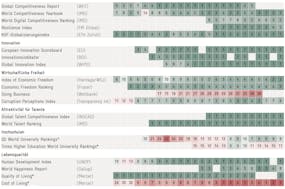Until the outbreak of the financial crisis in 2007, economists believed in an iron law: the volume growth of long term world trade would climb about twice as fast as global real gross domestic product. (Deutsche Bundesbank, January 2015). The so called elasticity of world trade to global growth was therefore about two. But since then, the rise of international trade has slowed noticeably, prompting economists around the world to speculate about the reasons. What’s most interesting isn’t the complex methodological and statistical questions about calculating real global gdp, or adjusting for purchasing power differences, but much more the possible cyclical or structural causes behind the slowdown.
Moderate short and medium term perspectives
Among cyclical factors is the disparate economic growth of individual countries and regions. Most striking of late has been the apparent tilt in growth towards industrialised countries – notably the US, Britain and to some extent the eurozone. Japan’s demographic challenges and high government debt make it a special case. By contrast, in the developing world – China and the raw materials exporting countries in particular – the slowdown has been prolonged.
What’s unclear is whether, considering high indebtedness and limited competitiveness – we are seeing a lasting decline in growth, or just a shorter term phenomenon. The economic challenges of recent refugee flows – distributed very unevenly by country and region – also play a part. And the immediate outlook will be affected by industrial countries’ differing monetary policies too.
On top of all that, it remains to be seen to what extent moving away from the ultra low interest rates of recent years may dampen growth. Normalising interest rates would also affect the ability of countries, companies and private citizens to service their debts. Monetary policy impacts exchange rates and global financial stability too. Based on all that, the signs are that world trade is likely to grow only moderately in the immediate and medium term future.
Long term uncertainty too
Among structural uncertainties is the possible rise in protectionism, the slower expansion of global value added production chains, and the rising trade in services. According to the 18th Global Trade Alert report of November 2015, countries have so far this year sought refuge in 539 measures hampering trade – twice as many as in 2009. At that time, the heads of state and government of the G20 leading industrial and developing nations praised free trade and committed themselves to protecting it. Similarly ominous for further liberalisation is the sluggish pace of the WTO’s long running Doha trade round.
Global value added production chains really came into their own in the 1990s, as developing countries became more integrated into world trade and exchanges of primary and intermediate products intensified. That has made international trade today more sensitive to demand shocks. Some normalisation may now be taking place after the hectic initial phase: both the IMF and the ECB reckon global production networks will develop more slowly in future.
By contrast with trade in goods, exchanges in services are much less integrated internationally. Although they account for about 70% of global output, they have only a one quarter share of world trade. Even in a region as economically developed as the eurozone, the share of cross border services has barely risen. (Deutsche Bundesbank, 2015).
All these developments and indicators give strong grounds to question the former dependable premise that world trade would continue growing steadily. Its elasticity in relation to production will become less stable (Sachverständigenrat, 2015). And should the concept of a more general “secular stagnation” be true, as some prominent US economists foresee, world trade would really find itself at a turning point.
Consequences for Switzerland
What does this all mean for Switzerland? The country needs to adjust much more quickly to a constantly changing, ever more complex and uncertain world than people currently believe. That will require a mix of policies geared to creating and ensuring a first class business location, allowing at least domestic stability.





